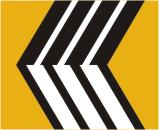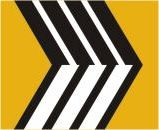03 April 2009:
I cut out the
hood and the whole area in front of the radiator (as in the real car). |
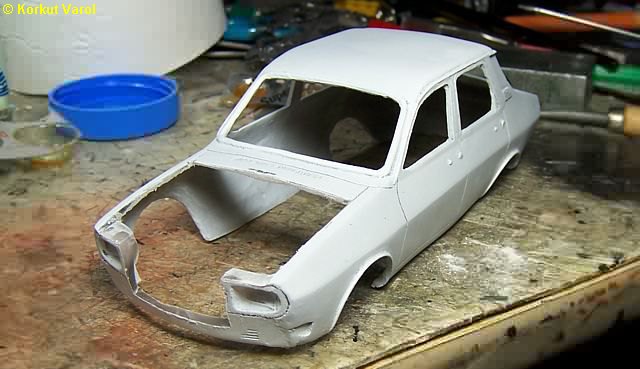
|
| I did not want
to deal with resin for the hood, so I decided to manufacture it from
0.70
mm brass sheet. I tailored the part and formed it to the curvatures of
the body. To depict the formed part at the center, I cut it off. |
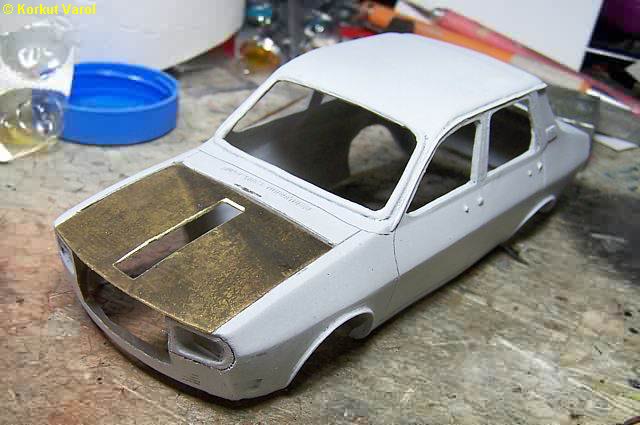
|
I
cut a strip from 0.3 mm brass sheet
to fit in the recess of the hood.
I pre-soldered
both parts all around
to prepare for the joining. |
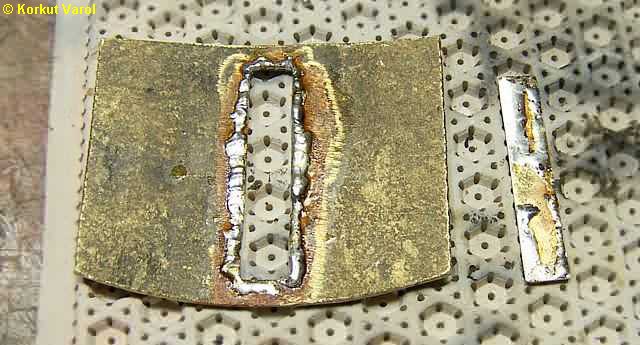
|
| I soldered the
central part flush with the inside of the hood, so that the pressed
form
rectangle was depicted outside. |
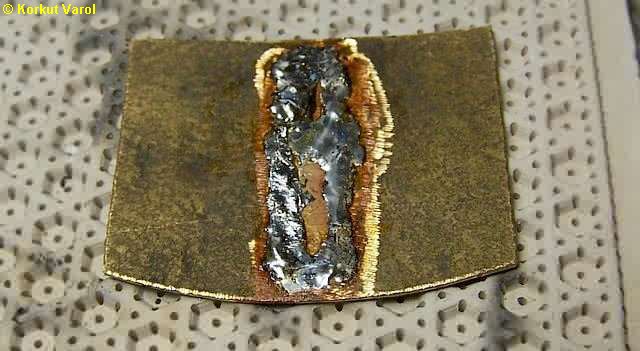
|
| This is the raw
hood... |
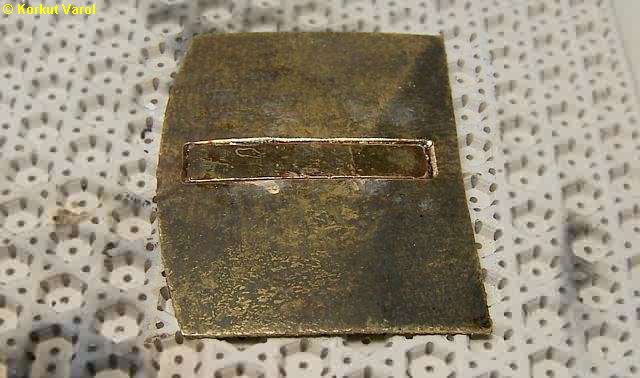
|
05 April 2009:
I began to cut
out the hole that serves for under-hood heat rejection. Also, I drew
the
underhood reinforcement on the computer, printed, then stuck it on 0.7
mm brass sheet with double-side adhesive. I drilled the pilot holes for
the cutouts. |
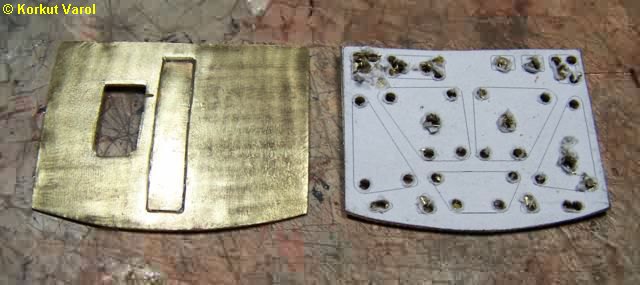
|
| I
completed the discharge hole, and
prepared a master for its cover from balsa wood. |
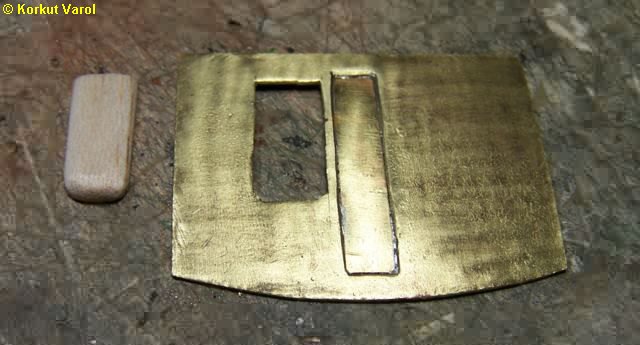
|
| I
finished the reinforcement and glued
the two parts with CA glue. |

|
| To
manufacture the cover, I had to
make
a male and a female die. First, I made a mold of silicone, from the
balsa
master; and made the resin male die (left). Then, using a mold
seperator
fluid, I applied automotive polyester putty on this male and formed the
female die. I put 0.1 mm thick aluminum foil in between and made a
"pressing".
To add strength, I applied CA glue on the inside with activator. I cut
off the rear surface and trimmed the peripherals. Now the cover is
ready
to be glued on the hood. |

|
06 April 2009:
To make the hood
open, I manufactured the front central panel/frame from 0.3 mm brass
sheet
and soldered housings for the hood hinges. |
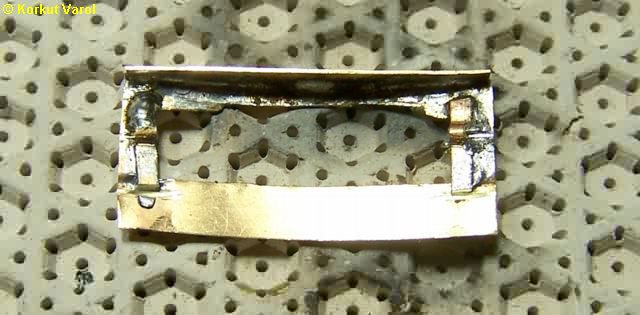
|
| After
a whole day's trial and error
attempts, I managed to manufacture a pair of properly working hinges. I
made a pair of housings for the hinge wire under the hood, and fixed
them
with CA glue. Not 100% realistic, but still better than a non-opening
hood... |
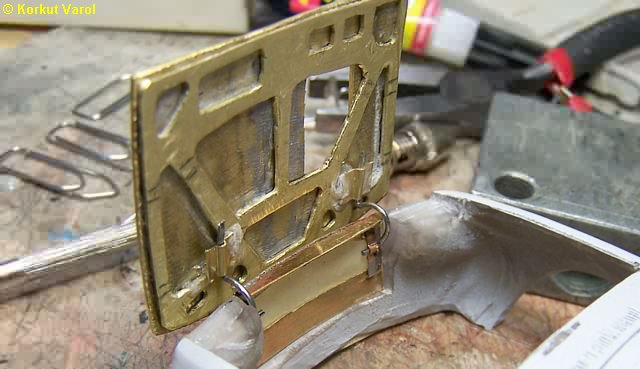
|
07 April 2009:
I installed the
inner wheelarch panels with CA glue. |
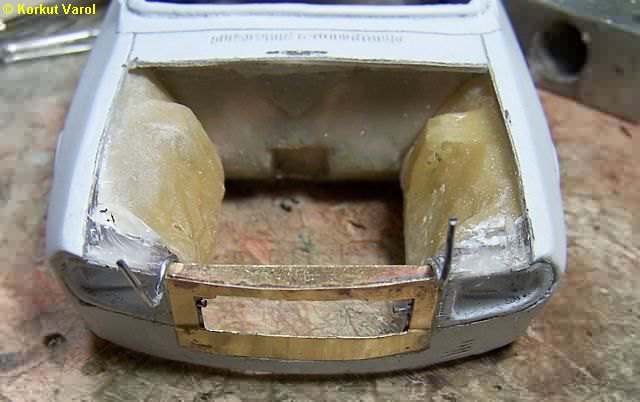
|
09 April 2009:
The tire that
I had cast previously was a little small in scale with the car. So I
began
searching for a new suitable tire. I found a diecast Citroen C3 model,
the tires being good in outer diameter but wider than required. Also
the
aspect ratio was lower than the needed. However, the tread pattern had
large teeth, suitable for a rally car. So I went on making a new tire,
using the rubber one. First I inserted a suitable part inside, then
made
a silicone mold from this and cast a half tire from resin. I had the
part
turned to 15 mm diameter at the inside and cut at half the tire width.
Now this will be the master for the new half-tire mold. |
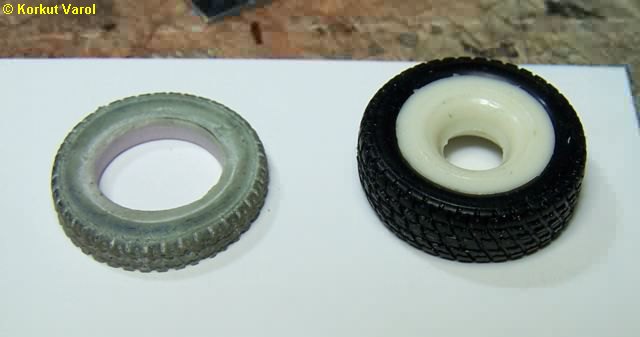
|
10 April 2009:
I made the luggage
compartment seperator panels from resin and plastic. I also glued the
front
chassis arms to the floor and firewall. |
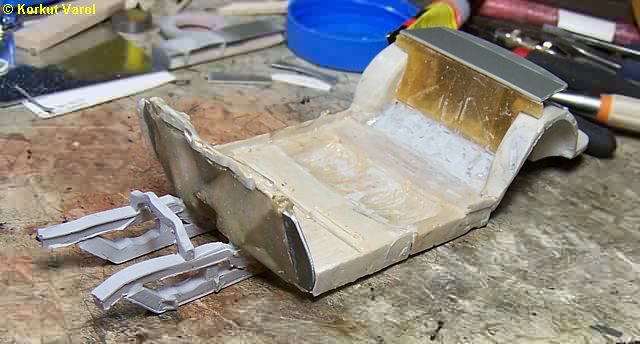
|
11 April 2009:
I made the master
for the dashboard (left) from balsa and styrene sheets. Then I made a
silicon
mold and got a resin copy (right). |
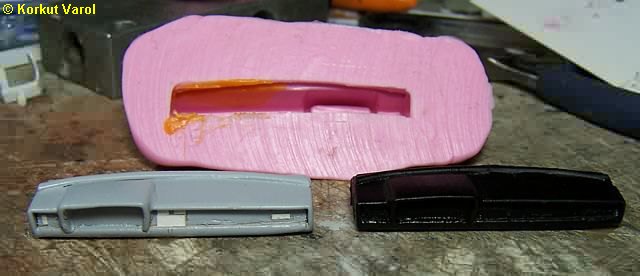
|
| For
the rear axle, it was impossible
to bend a wide profile section. So I thought of forming the whole by
layers.
I used 3 rectangular strips to make for the width of the beam. I drew
the
rear axle profile on a piece of wood and cut a shaping master channel
with
my Dremel. I used a heat gun to form the strips in the channel. The
formed
strips were glued to make the raw beam. |

|
12 April 2009:
I manufactured
other items on the rear axle from styrene sheets and completed the item. |
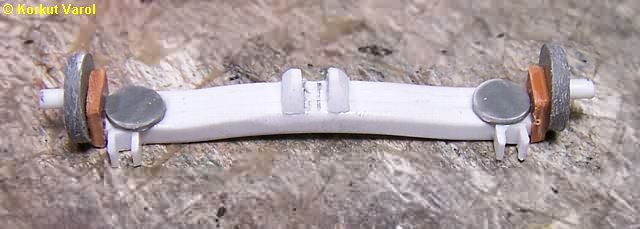
|
14 April 2009:
For the glasses,
I copied one male and one female sections from both the front and rear
windows, of automotive polyester putty. I used the pairs as dies for
acetate,
After pressing with a clamp, I applied heat from a heat gun to form the
windows. |
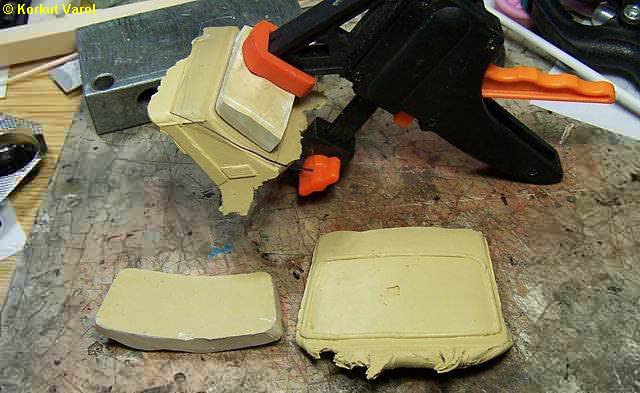
|
One
of the toughest deals was to manufacture
the wheels.
(1)
I founda a suitable
diameter wheel from my parts box.
(2)
It took me two days
to make the central parts from styrene sheet as the master. Then I made
a silicon mold.
(3)
The cast resin raw wheel
(4)
The complete wheel
and tyre as painted. |
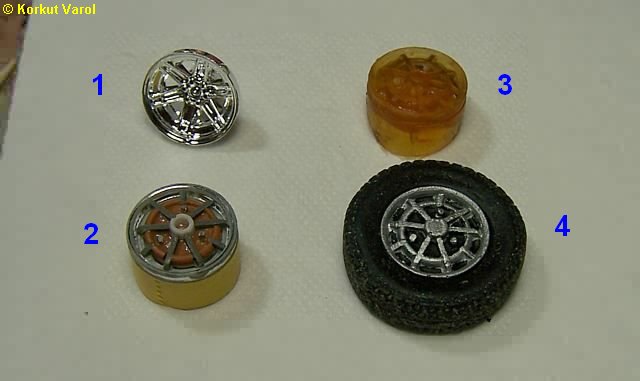
|

|
 
|
